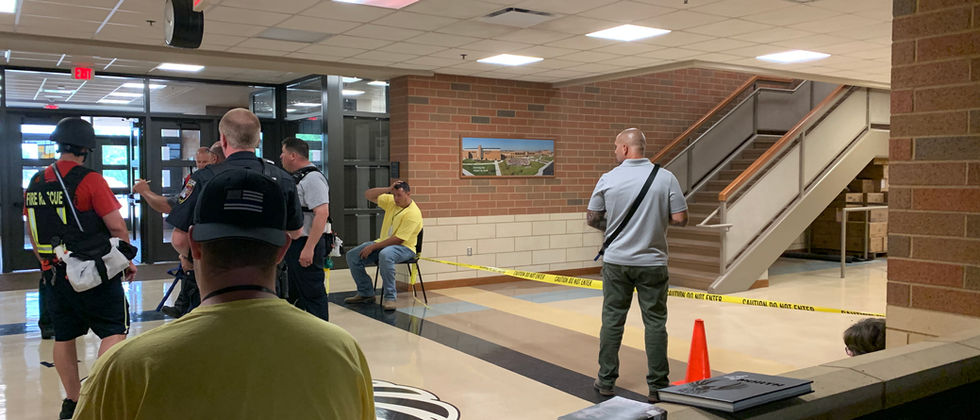WILL COUNTY
ACTIVE THREAT
RESPONSE COMMITTEE

.png)
In April 2017, the Will County Emergency Management Agency organized a trip to the National Fire Academy to attend a four-day course through the Federal Emergency Management Agency titled Preparing Communities for a Complex Coordinated Attack. Fifty-three attended from across the county, which included police, fire, ema, schools, and other various leaders within the County. The course was scenario based and designed to identify any weaknesses in Will County’s response capabilities, in all aspects, when confronted with a complex coordinated attack.
It was identified in the course that Will County did not have a standardized command and control model, including unified command, for large scale/hostile incidents. In other words, we were all doing something different, even though we all work together. The reality is every agency within the County, police, fire, ema, etc., will work with each other at some point, on some big incident. Developing a common, predictable command and control model for these types of incidents is crucial to success. Predictability in command and control provides a proficient and effective incident command model. The million-dollar question was, if we could just get police and fire to talk and work together and understand each other’s worlds.
Finally, a few of us began talking and a diverse committee was formed to tackle this monumental task of getting ONE command and control model for police and fire in Will County, for active threat incidents/mass casualty incidents. We also had to figure out how we were going to train all police and fire agencies in the County. Our committee consisted of law enforcement, fire/ems and ema. As we grew, we brought in the dispatch centers and identified communications challenges and radio capabilities, or lack thereof, for all county agencies. We could not believe the amount of information we all learned from each other. Our focus began on Active threat incidents, as this was becoming an epidemic across the Country. The Rescue Task Force concept was not new, but it was imperative that Chiefs understood the “warm zone” entry concept. Once we had support from the law enforcement and fire leaders within the county, the committee took off.
Over the last few years, we have developed and re-developed this program numerous times and turned this into a full one-day course. This program is not perfect, but it is a program that can be plugged into any organization and can work. As one of my co-committeemen said numerous times, “We cannot let perfect get in the way of good”. There has not been any plan or program that standardizes communication flow, using common terminology, for active threat/mass casualty incidents, until now. We are confident this program can and will work. At the end of the day, we all have to work together to have a successful outcome.





